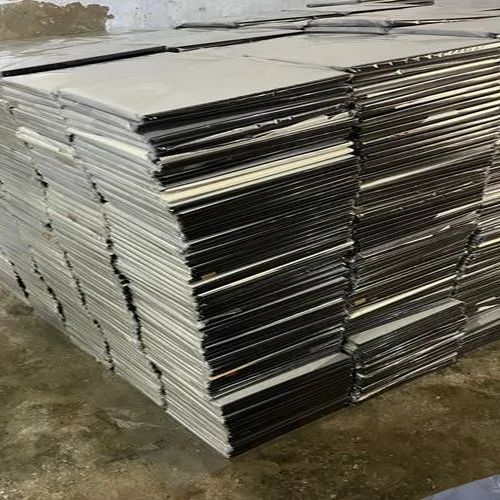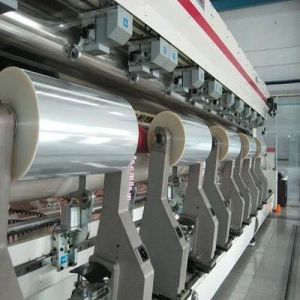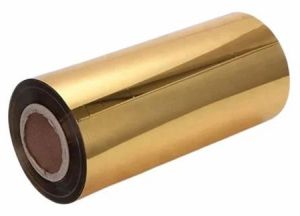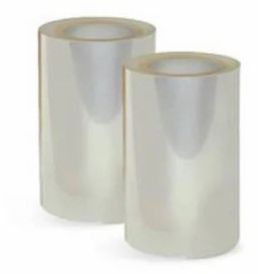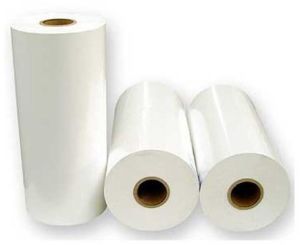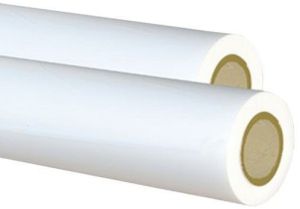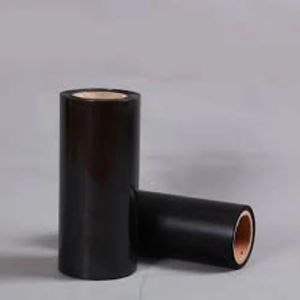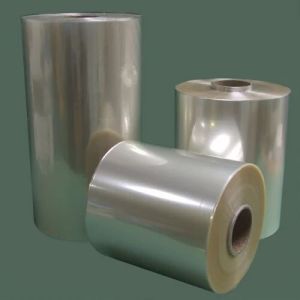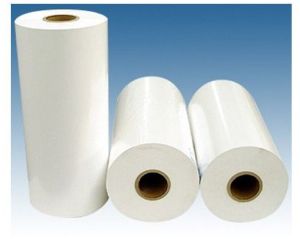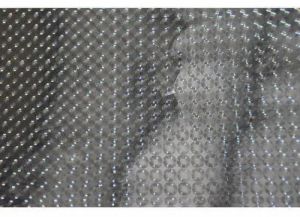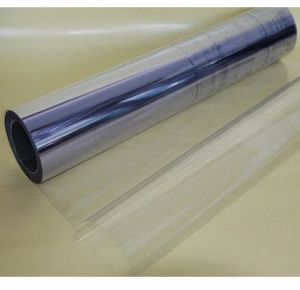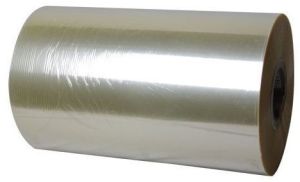shreeshyampolyfilms01@gmail.com - GST NO. : 08BFEPJ9714A1ZO
| Business Type | Manufacturer, Supplier, Retailer, Trader, Distributor |
| Pattern | Plain |
| Application | Advertisement, Decoration, Exhibition Booth, Laser Cutting, Lightbox, Signage And Advertising Aquarium |
| Brand | Own |
| Click to view more | |
Product Details
Here\'s a breakdown of OHP sheets:
What they are:
* Transparent Plastic Film: OHP sheets are thin, flexible sheets made from transparent plastic. Historically, they were made from cellulose acetate, but more modern and durable versions are typically made from polyester (PET) or polypropylene films.
* Used with Overhead Projectors: They are placed on the lighted stage of an overhead projector, which then magnifies and projects the content onto a screen or wall.
* Printable and Writable: They can be written on with special OHP markers (often dry-erase or permanent markers) or printed on using compatible inkjet or laser printers.
Key Characteristics and Properties:
* Transparency: Their most crucial feature, allowing light to pass through and project the content clearly.
* Clarity: Good quality OHP sheets offer high clarity and minimal distortion for sharp projected images.
* Durability: Modern polyester OHP sheets are tear-resistant, wrinkle-resistant, and can withstand repeated use.
* Printability: Specific types are designed for inkjet or laser printers, with coatings to ensure ink adhesion and prevent smudging.
* Smooth Surface: Provides a good surface for writing and drawing.
* Various Sizes and Thicknesses: Commonly available in A4 size, but other sizes exist. Thickness is measured in microns (e.g., 100 micron, 175 micron), with thicker sheets generally being more rigid and durable.
Types of OHP Sheets:
While the basic concept is the same, OHP sheets can be specialized:
* Write-on OHP Sheets: Designed for direct writing with markers.
* Inkjet OHP Sheets: Specially coated to absorb inkjet ink without smudging.
* Laser OHP Sheets: Made to withstand the heat of laser printers and copiers without melting or curling.
* Thermal OHP Sheets: Used with thermal transfer printers.
* Clear/Transparent: The most common type, offering maximum visibility.
* Frosted: Offers a slightly diffused appearance, sometimes used for specific artistic effects.
* Colored: Less common, but sometimes available for specific visual needs.
* With/Without Interleaf: Some packs include a paper interleaf between each sheet to prevent sticking and scratching.
* With Masking Film: Some OHP sheets come with a protective masking film on both sides to prevent scratches during handling and storage, which is peeled off before use.
Common Applications:
While overhead projectors are less common now, OHP sheets still find use in various areas:
* Presentations and Education (Traditional): Their original and most well-known use in classrooms and business meetings for displaying notes, diagrams, and illustrations.
* Arts and Crafts:
* Tracing and Stenciling: Their transparency makes them excellent for tracing images or creating stencils for various art projects.
* Mixed Media Art: Used in collages, layering, and other artistic creations for transparent effects.
* Resin Art: Often used as a non-stick surface for pouring and curing resin.
* Baking and Confectionery:
* Chocolate Decorations: Used by pastry chefs to create intricate chocolate designs (e.g., chocolate curls, lace patterns) by spreading melted chocolate onto the sheet, allowing it to cool, and then peeling it off.
* Layer Separation: Can be used to separate layers in desserts or cakes.
* Prototyping and Design: In manufacturing and engineering, for tracing and visualizing intricate details.
* Electronics Industry: For circuit board production and as protective layers for delicate components.
* DIY and Home Improvement: Creating temporary window inserts, protective coverings, or even stencils for painting.
* Screen Printing: Can be used to create transparencies for screen printing stencils.
In essence, OHP sheets are versatile transparent plastic films that, despite the decline of overhead projectors, continue to be valuable tools in a range of creative, educational, and practical applications due to their clarity, durability, and ability to be written or printed upon.
OHP sheets, short for Overhead Projector Sheets, are transparent plastic films primarily designed for use with overhead projectors to display images, text, or diagrams to an audience on a larger screen or wall. While their traditional use has declined with the rise of digital projectors, they still have various applications in different fields. Here's a breakdown of OHP sheets: What they are: * Transparent Plastic Film: OHP sheets are thin, flexible sheets made from transparent plastic. Historically, they were made from cellulose acetate, but more modern and durable versions are typically made from polyester (PET) or polypropylene films. * Used with Overhead Projectors: They are placed on the lighted stage of an overhead projector, which then magnifies and projects the content onto a screen or wall. * Printable and Writable: They can be written on with special OHP markers (often dry-erase or permanent markers) or printed on using compatible inkjet or laser printers. Key Characteristics and Properties: * Transparency: Their most crucial feature, allowing light to pass through and project the content clearly. * Clarity: Good quality OHP sheets offer high clarity and minimal distortion for sharp projected images. * Durability: Modern polyester OHP sheets are tear-resistant, wrinkle-resistant, and can withstand repeated use. * Printability: Specific types are designed for inkjet or laser printers, with coatings to ensure ink adhesion and prevent smudging. * Smooth Surface: Provides a good surface for writing and drawing. * Various Sizes and Thicknesses: Commonly available in A4 size, but other sizes exist. Thickness is measured in microns (e.g., 100 micron, 175 micron), with thicker sheets generally being more rigid and durable. Types of OHP Sheets: While the basic concept is the same, OHP sheets can be specialized: * Write-on OHP Sheets: Designed for direct writing with markers. * Inkjet OHP Sheets: Specially coated to absorb inkjet ink without smudging. * Laser OHP Sheets: Made to withstand the heat of laser printers and copiers without melting or curling. * Thermal OHP Sheets: Used with thermal transfer printers. * Clear/Transparent: The most common type, offering maximum visibility. * Frosted: Offers a slightly diffused appearance, sometimes used for specific artistic effects. * Colored: Less common, but sometimes available for specific visual needs. * With/Without Interleaf: Some packs include a paper interleaf between each sheet to prevent sticking and scratching. * With Masking Film: Some OHP sheets come with a protective masking film on both sides to prevent scratches during handling and storage, which is peeled off before use. Common Applications: While overhead projectors are less common now, OHP sheets still find use in various areas: * Presentations and Education (Traditional): Their original and most well-known use in classrooms and business meetings for displaying notes, diagrams, and illustrations. * Arts and Crafts: * Tracing and Stenciling: Their transparency makes them excellent for tracing images or creating stencils for various art projects. * Mixed Media Art: Used in collages, layering, and other artistic creations for transparent effects. * Resin Art: Often used as a non-stick surface for pouring and curing resin. * Baking and Confectionery: * Chocolate Decorations: Used by pastry chefs to create intricate chocolate designs (e.g., chocolate curls, lace patterns) by spreading melted chocolate onto the sheet, allowing it to cool, and then peeling it off. * Layer Separation: Can be used to separate layers in desserts or cakes. * Prototyping and Design: In manufacturing and engineering, for tracing and visualizing intricate details. * Electronics Industry: For circuit board production and as protective layers for delicate components. * DIY and Home Improvement: Creating temporary window inserts, protective coverings, or even stencils for painting. * Screen Printing: Can b

